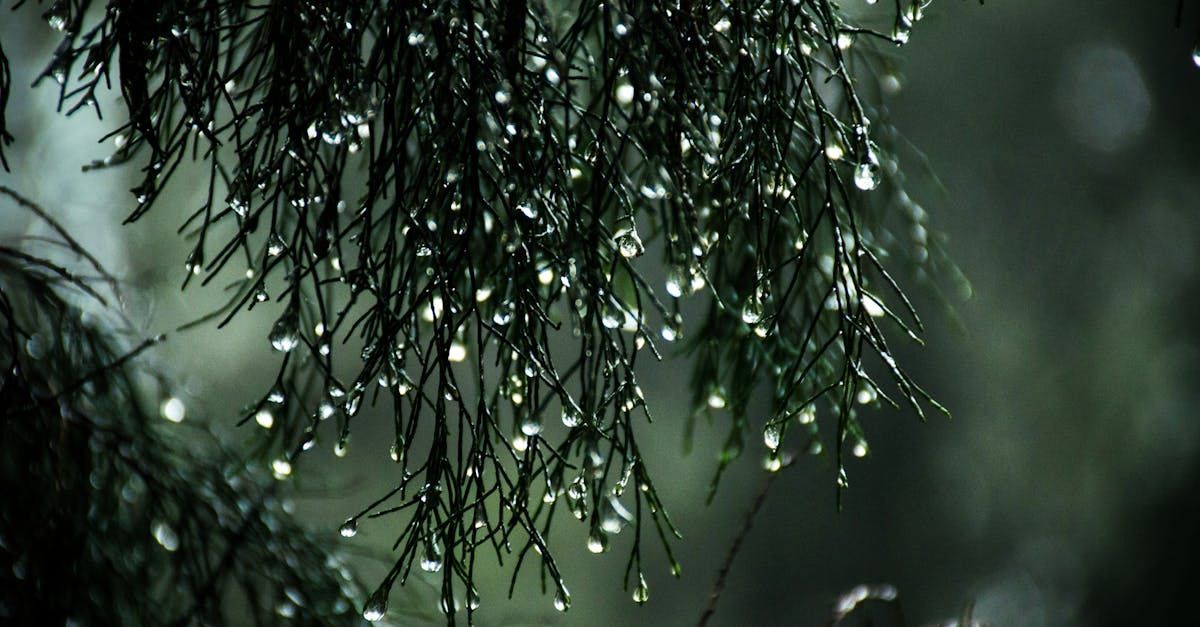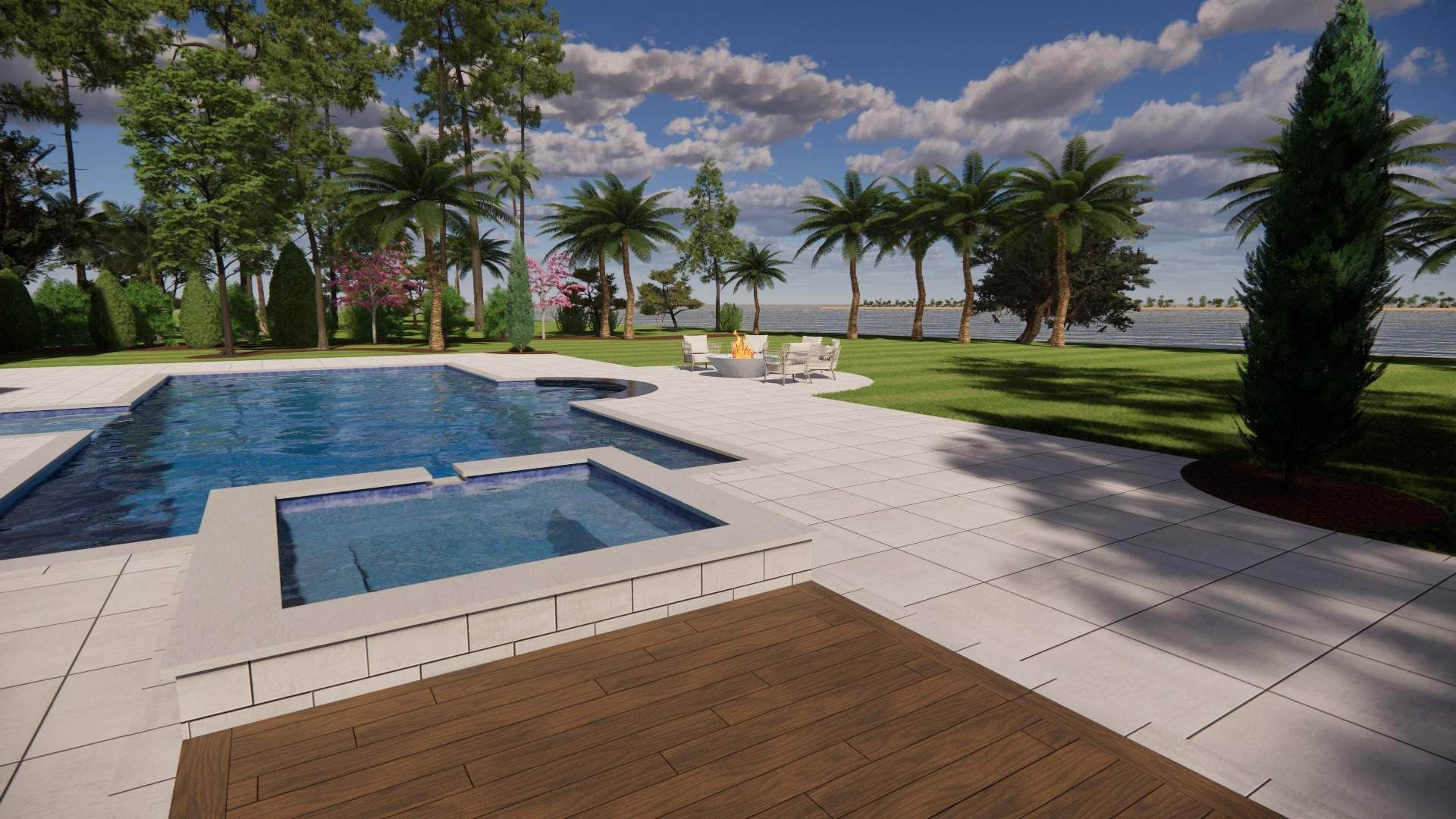Rainwater Harvesting Integration: Hilton Head's Green Fix
Rainwater harvesting integration is a smart and sustainable approach to landscaping that can significantly improve water efficiency and reduce costs for property owners in Hilton Head Island. By collecting and storing rainwater for later use in irrigation and other landscaping needs, this method helps conserve precious water resources while maintaining beautiful outdoor spaces.
Key Takeaways
- Rainwater harvesting can reduce reliance on municipal water supplies for landscaping
- Integration with existing irrigation systems enhances water efficiency
- Proper design and installation are crucial for effective rainwater harvesting
- Local regulations in Hilton Head may affect system implementation
- Cost savings on water bills can offset initial investment over time
- Environmental benefits include reduced runoff and water conservation
Understanding Rainwater Harvesting in Hilton Head's Climate
Hilton Head Island's subtropical climate, with its frequent rainfall, makes it an ideal location for rainwater harvesting. The area receives an average of 50 inches of rain per year, providing ample opportunity to collect and use this natural resource for landscaping purposes.
The Benefits of Rainwater Harvesting for Local Landscapes
Integrating rainwater harvesting into Hilton Head landscapes offers several advantages. It reduces the demand on the municipal water supply, which is especially important during dry spells or periods of water restrictions. This practice also helps to manage stormwater runoff, reducing erosion and the strain on local drainage systems.
How Rainwater Harvesting Works in a Landscape Setting
In a typical rainwater harvesting system, water is collected from rooftops or other impervious surfaces and directed through gutters and downspouts into storage tanks. From there, the water can be pumped or gravity-fed into irrigation systems as needed.
Designing an Integrated Rainwater Harvesting System
When planning to integrate rainwater harvesting into a landscape design, several factors must be considered to ensure the system works efficiently and complements the existing outdoor space.
Assessing Your Property's Potential
The first step in designing a rainwater harvesting system is to assess the property's layout, including roof area, slope, and available space for storage tanks. This assessment helps determine the potential volume of water that can be collected and the best locations for system components.
Choosing the Right Storage Solutions
Storage options for harvested rainwater range from above-ground tanks to underground cisterns. The choice depends on factors such as available space, aesthetic preferences, and budget. In Hilton Head, where hurricanes can be a concern, it's important to select sturdy, well-anchored storage solutions.
Integrating with Existing Irrigation Systems
For seamless integration, the rainwater harvesting system should be compatible with existing irrigation setups. This may involve installing pumps, filters, and control systems to ensure proper water pressure and distribution throughout the landscape.
Implementation Strategies for Hilton Head Properties
Implementing a rainwater harvesting system in Hilton Head requires careful planning and execution to ensure compliance with local regulations and optimal performance.
Navigating Local Regulations and Permits
Before installing a rainwater harvesting system, it's essential to check with local authorities regarding any permits or regulations that may apply. Hilton Head Island has specific codes related to water conservation and stormwater management that could affect system design and installation.
Professional Installation vs. DIY Approaches
While some homeowners may opt for a DIY approach to rainwater harvesting, professional installation is often recommended for larger or more complex systems. Professional landscapers familiar with local conditions can ensure proper setup and integration with existing landscape features.
Seasonal Considerations for System Management
Hilton Head's climate requires a year-round approach to rainwater harvesting management. During the hurricane season, systems may need to be secured or modified to prevent damage. In drier months, careful water management is crucial to maximize the benefits of stored rainwater.
Maximizing Efficiency Through Smart Technology
Incorporating smart technology into rainwater harvesting systems can greatly enhance their efficiency and ease of use.
Automated Irrigation Control Systems
Smart irrigation controllers can be programmed to use harvested rainwater preferentially, switching to municipal water only when rainwater supplies are depleted. These systems can also adjust watering schedules based on weather forecasts and soil moisture levels.
Real-time Monitoring and Maintenance Alerts
Advanced monitoring systems can track water levels, usage patterns, and system performance in real-time. These tools can alert property owners or landscapers to potential issues, enabling proactive maintenance and ensuring optimal system operation.

Cost Considerations and Return on Investment
While integrating rainwater harvesting into a landscape design involves upfront costs, the long-term benefits can provide a significant return on investment.
Initial Setup Costs vs. Long-term Savings
The initial costs of a rainwater harvesting system include storage tanks, pumps, filters, and installation. However, these costs are offset over time by reduced water bills and potentially lower maintenance costs for the landscape.
Potential Rebates and Incentives
Some local utilities or government agencies may offer rebates or incentives for installing rainwater harvesting systems. Property owners should research available programs that could help offset the initial investment.
Environmental Impact and Sustainability
Rainwater harvesting is not just a cost-saving measure; it's also an environmentally responsible choice that contributes to the overall sustainability of Hilton Head Island.
Reducing Pressure on Local Water Resources
By using harvested rainwater for landscape irrigation, property owners can significantly reduce their demand on municipal water supplies, helping to conserve this valuable resource for essential uses.
Minimizing Stormwater Runoff and Erosion
Collecting rainwater that would otherwise become runoff helps to reduce erosion and the transport of pollutants into local waterways. This is particularly important in Hilton Head's coastal environment.
Maintenance and Upkeep of Integrated Systems
Proper maintenance is crucial for the long-term success of a rainwater harvesting system integrated into a landscape design.
Regular Inspection and Cleaning Routines
Regular inspections of gutters, downspouts, filters, and storage tanks are necessary to ensure the system operates efficiently. Cleaning these components prevents debris buildup that could compromise water quality or system performance.
Addressing Common Issues in Coastal Environments
Hilton Head's coastal location presents unique challenges for rainwater harvesting systems, such as salt spray corrosion and sand accumulation. Regular maintenance should include checks for these issues and appropriate protective measures.
Case Studies: Successful Implementations in Hilton Head
Examining successful rainwater harvesting integrations in Hilton Head can provide valuable insights and inspiration for property owners considering this approach.
Residential Success Story: The Smith Family's Lush Lawn
The Smith family integrated a 5,000-gallon underground cistern into their landscape design, connecting it to their irrigation system. They now use 80% less municipal water for lawn care, maintaining a lush, green yard even during dry spells.
Commercial Application: Beachfront Resort's Water-wise Gardens
A local beachfront resort installed a large-scale rainwater harvesting system, collecting water from its extensive roof area. The resort now uses this water to maintain its gardens and water features, significantly reducing its water bills and environmental impact.
Integrating Rainwater Harvesting with Other Sustainable Practices
Rainwater harvesting can be part of a broader approach to sustainable landscaping in Hilton Head.
Complementary Water Conservation Techniques
Combining rainwater harvesting with other water-saving practices such as drought-resistant plantings, mulching, and efficient irrigation techniques can further enhance water conservation efforts.
Creating a Holistic Eco-friendly Landscape Design
Integrating rainwater harvesting into a comprehensive eco-friendly landscape design can include features like rain gardens, permeable paving, and native plant selections, creating a beautiful and sustainable outdoor space.
Future Trends in Rainwater Harvesting for Landscaping
As technology advances and climate concerns grow, rainwater harvesting is likely to evolve and become even more integrated into landscape designs.
Emerging Technologies and Innovations
New materials for storage tanks, improved filtration systems, and more sophisticated control mechanisms are likely to make rainwater harvesting systems more efficient and easier to manage in the future.
Adapting to Climate Change in Coastal Areas
As climate patterns shift, rainwater harvesting systems may need to adapt to handle more intense rainfall events or longer dry periods. Flexible system designs that can be easily modified will be increasingly important.
Education and Outreach: Promoting Rainwater Harvesting in Hilton Head
Increasing awareness and understanding of rainwater harvesting benefits can lead to wider adoption across Hilton Head Island.
Community Workshops and Demonstration Projects
Local landscaping companies and environmental organizations can host workshops and create demonstration projects to showcase the benefits and techniques of rainwater harvesting integration.
Collaborating with Local Schools and Organizations
Partnering with schools and community organizations to educate students and residents about rainwater harvesting can help foster a culture of water conservation and sustainable landscaping practices.
Overcoming Common Challenges in System Integration
While rainwater harvesting offers many benefits, there are challenges to overcome when integrating these systems into existing landscapes.
Addressing Space Limitations in Urban Settings
In more densely developed areas of Hilton Head, creative solutions may be needed to incorporate storage tanks and other system components without compromising the aesthetic or functional aspects of the landscape.
Ensuring Water Quality for Various Uses
Proper filtration and treatment systems are essential to ensure that harvested rainwater is suitable for its intended uses, whether for irrigation, water features, or other landscape applications.

The Role of Professional Landscapers in Rainwater Harvesting Integration
Professional landscapers play a crucial role in the successful integration of rainwater harvesting systems into Hilton Head properties.
Expert Design and Installation Services
Experienced landscapers can provide expert design services, ensuring that rainwater harvesting systems are seamlessly integrated into the overall landscape plan and properly installed for optimal performance.
Ongoing Maintenance and System Optimization
Professional landscapers can offer ongoing maintenance services to keep rainwater harvesting systems functioning efficiently, as well as provide advice on system optimization as landscape needs change over time.
The Future of Landscaping in Hilton Head
Integrating rainwater harvesting into landscape designs represents a significant step towards more sustainable and efficient outdoor spaces in Hilton Head Island. As water conservation becomes increasingly important, this approach offers a practical solution that benefits both property owners and the local environment. By embracing rainwater harvesting, Hilton Head residents can maintain beautiful landscapes while contributing to the long-term sustainability of their coastal community. For more information, you can visit our website or contact us.

- Benefits of rainwater harvesting for Hilton Head landscapes:
- Reduces reliance on municipal water supply
- Lowers water bills
- Helps manage stormwater runoff
- Provides water during dry spells or restrictions
- Improves plant health with naturally soft water
- Contributes to sustainable water management practices



